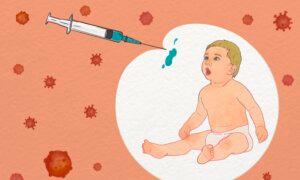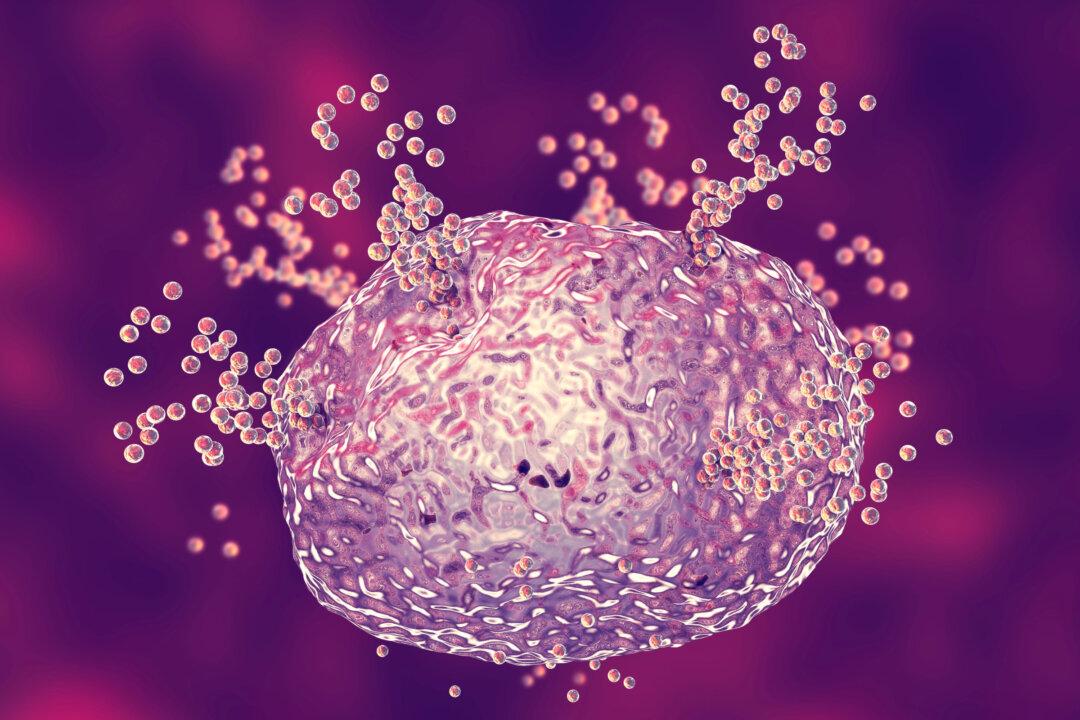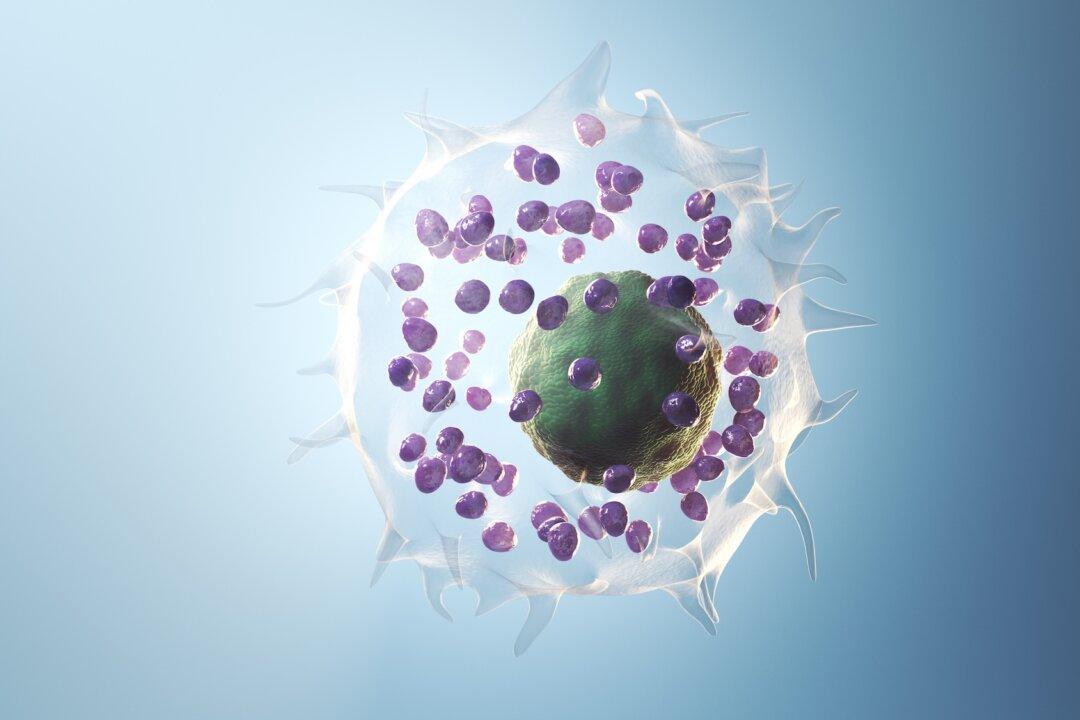In a recent press briefing by the World Health Organization’s Natasha Crowcroft, a senior technical adviser on measles and rubella, warned that more than half the world will be at a “high or very high risk” of measles outbreaks by the end of 2024.
So far this year, 35 cases have been reported throughout the United States in Arizona, California, Florida, Georgia, Indiana, Louisiana, Maryland, Minnesota, Missouri, New Jersey, New York City, Ohio, Pennsylvania, Virginia, and Washington. Interestingly, 2019 boasted the highest number of measles cases since 1992 with 1,274 cases reported.
With measles popping up in the news, parents and caregivers may be left feeling a bit uneasy about how to foster vibrant immune function and overall health in children.
What Is Measles?
Measles is a highly contagious illness thought to be caused by the virus morbillivirus. It also goes by the names rubeola, 10-day measles, or red measles. It is not to be confused with German measles or rubella. While the majority of children who are healthy and well-nourished should work through the illness without significant repercussions, measles can be a serious and life-threatening illness for immunocompromised children—especially those with vitamin A deficiency.How Is Measles Spread?
Measles is highly contagious and is thought to be spread through particles in the air via coughing or sneezing. According to the Centers for Disease Control and Prevention, the virus can remain airborne or on contaminated surfaces for up to two hours.Measles Symptoms
- Fatigue
- Fever
- Cough
- Congestion
- Conjunctivitis
- Red or bloodshot eyes
- Myalgia (aches and pain in muscles, tendons, etc.)
- Light sensitivity
- Sore throat
- White spots in the mouth known as Koplik spots
- A rash that spreads from the hairline to the rest of the body that lasts seven to 10 days
The 4 Stages of Measles
The average measles case will last about 10 days and will move through four stages.1. Incubation
This is the period between exposure and when symptoms arise and usually lasts six to 21 days. Usually, no symptoms are present during this time.2. Prodrome
This phase lasts four to six days and is characterized by high fever, malaise, coryza (inflammation of the nasal mucous membranes) conjunctivitis, palpebral edema (eyelid swelling), and dry cough. Conjunctivitis can be associated with intolerance to light.Most cases show the distinctive Koplik spots which are small white spots that appear on the insides of the cheeks. Described as grains of salt on a red background, Koplik spots appear two to three days before the rash and disappear on the third day. While not everyone presents with Koplik spots, watch for them as they are a telltale sign of the disease.
3. Exanthem
The exanthem is the erupting or rash stage of the illness that occurs two to four days after the fever begins. The rash spots are dark red, flat, or raised and first appear on the forehead near the hairline and behind the ears. It then extends downward to the face, neck, trunk, and extremities. The fever and malaise usually disappear two to three days after the rash begins. The rash usually resolves in about five to six days.4. Recovery
The final phase is the recovery or convalescence stage which happens as the rash begins to disappear in the same sequence that it appeared. The rash will begin to turn brown and peel. Children need ample time to recover from measles as it can be very depleting. Provide them with fresh air, sunshine, rest, and a nutrient-dense diet during this time.Complications
Although most people recover from measles without any complications, there is still a risk of a poor outcome. Infants and children under the age of five years, adults over the age of twenty, pregnant women, and those who are immunocompromised are more likely to have significant complications. Complications can arise during or soon after acute illness, such as:- Ear infections
- Croup
- Pneumonia
- Diarrhea
- Dehydration
- Stomatitis
- Encephalitis
- Acute disseminated encephalomyelitis (a demyelinating disease that occurs in about 1 in 1000 cases)
- Subacute sclerosing panencephalitis (a progressive neurological disorder of the central nervous system in children and young adults) can occur months or years later
- Death
Conventional Treatment
Many in the conventional realm believe that vaccination is the best way to protect against measles. Before the measles vaccine, the virus was a typical childhood illness that the majority of children would get—almost serving as a right of passage for children to work through and emerge triumphantly.The vaccine was tested on children between 1958–1960 and licensed and introduced to the public in the late 1960s. Since then, measles has not been as common. Although rare, children who have been vaccinated can still contract measles.
Antibiotics
Antibiotics are ineffective for viral illness, yet can be useful in the case of secondary bacterial infections such as pneumonia.Natural Remedies for Measles
With recent measles cases amping up, let’s unpack some natural ways to support the body. The goal for caregivers is to speed recovery and avoid complications.Note: The following information is for educational purposes only. Always seek out a skilled health care provider who is licensed in your state if you suspect your child has measles.
General Recommendations
- Keep your child home from school and other activities.
- Prioritize rest for the entirety of the illness until the rash begins to fade and the child’s countenance is back to normal.
- Dim the lights or create a dark environment if the child is struggling with light sensitivity.
- Signs of measles complications include difficulty breathing, severe headache or convulsions, hearing loss, and more. Seek medical care immediately.
Hydration
Dehydration is always a concern when working through illness, especially those that include fever. During acute illness, avoid dehydration by giving small sips of water, bone broth, herbal teas, electrolytes, or flakes of ice. There are many health-promoting organic electrolytes available without artificial dyes, preservatives, and sugars.It is worth mentioning, many who are naturally minded prize coconut water for replenishing electrolytes. However, coconut water is mostly comprised of potassium and phosphorus but does not provide the needed sodium and chloride needed to properly replenish electrolytes.
Vitamin A
Vitamin A deficiency is a risk factor for severe measles illness. In fact, vitamin A supplementation can be life-saving for those with measles. The disease burden and high fevers that usually come with measles can rapidly deplete the body’s vitamin A levels. Researchers recommend the following doses for children who are deficient in vitamin A. Please note that vitamin A deficiency must be determined by a health care provider.- Babies under 6 months old: 50,000 international units (IU)
- Babies 6 to 11 months old: 100,000 IU
- Children over 12 months: 200,000 IU
Responsibly raised animal foods offer the most bioavailable form of vitamin A. These include grass-fed beef liver, pasture-raised eggs, oily fish, and grass-fed, full-fat dairy products such as butter, ghee, cream, and milk. Other foods high in vitamin A include carrots, butternut squash, sweet potato, broccoli, spinach, and dark green leafy vegetables.
Cod Liver Oil
Cod liver oil is a lovely whole-food supplement that offers vitamins A, D, and K that work synergistically to support the immune system. As mentioned earlier, a risk in supplementing with fat-soluble vitamins is that they can build up to toxic levels within the body. One way to avoid this is to take them together in whole-food forms. The most effective vitamin A supplementation should be in conjunction with vitamin D. This makes cod liver oil a wonderful immune-supporting supplement. Note: Do not take additional vitamin A if supplementing with cod liver oil.Vitamin C
Whole-food vitamin C supplementation can have a powerful antiviral impact on the body as it fights fever and infection. Also consider foods high in vitamin C including oranges, lemons, peppers, strawberries, black currants, broccoli, and papaya.Zinc
Zinc is a powerful antiviral and is another great way to support the immune system. Zinc reduces symptoms and speeds recovery. Meat, shellfish, dairy, legumes, nuts, and seeds are all high in zinc.Echinacea and Elderberry
These herbs are well established in research as immune-supportive herbs with potent antiviral properties and may help reduce the severity of illness.Homeopathy
Although homeopathic remedies are somewhat controversial, many with a holistic mindset find them very valuable. Pulsatilla, aconite, and belladonna can be helpful for symptoms associated with measles.Topical Support
- Conjunctivitis: clean the area with saline. Consider chamomile eye compresses or cooled chamomile tea bags. Applying breast milk if you are breastfeeding can be supportive.
- Oatmeal baths will help soothe the skin rash.
- Herbs such as calendula, lavender, licorice root, and marshmallow root are very soothing and restorative to the skin. Use them in washes, compresses, and balms to support the skin.
Throat Discomfort
- Salt water gargles
- Raw honey
- Garlic-infused honey. Note: Children under the age of 1 should not have honey due to botulism concerns.
Earache
- Garlic and mullein oil can be applied to the inner ear to fight infection. There are many herbal preparations in proper ratios available for purchase.
- Lavender and tea tree essential oils properly diluted according to the age of your child and applied outside of the ear and down the neck can support lymph flow in the area. Note: Never put essential oils into the ear.
- Chiropractic adjustments may also help eustachian tubes to drain properly.







